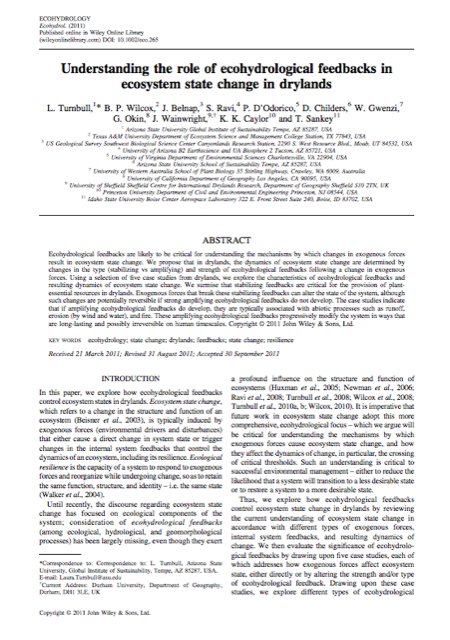Understanding the role of ecohydrological feedbacks in ecosystem-state change in drylands

Turnbull, L., Wilcox, B.P., Belnap, J., Ravi, S., D’Odorico, P., Childers, D., Gwenzi, W., Okin, G., Wainwright, J., Caylor, K.K., Sankey, T. (2011) “Understanding the role of ecohydrological feedbacks in ecosystem-state change in drylands”, Ecohydrology, 10.1002/eco.265.
Ecohydrological feedbacks are likely to be critical for understanding the mechanisms by which changes in exogenous forces result in ecosystem state change. We propose that in drylands, the dynamics of ecosystem state change are determined by changes in the type (stabilizing vs amplifying) and strength of ecohydrological feedbacks following a change in exogenous forces. Using a selection of five case studies from drylands, we explore the characteristics of ecohydrological feedbacks and resulting dynamics of ecosystem state change. We surmise that stabilizing feedbacks are critical for the provision of plant- essential resources in drylands. Exogenous forces that break these stabilizing feedbacks can alter the state of the system, although such changes are potentially reversible if strong amplifying ecohydrological feedbacks do not develop. The case studies indicate that if amplifying ecohydrological feedbacks do develop, they are typically associated with abiotic processes such as runoff, erosion (by wind and water), and fire. These amplifying ecohydrological feedbacks progressively modify the system in ways that are long-lasting and possibly irreversible on human timescales.
